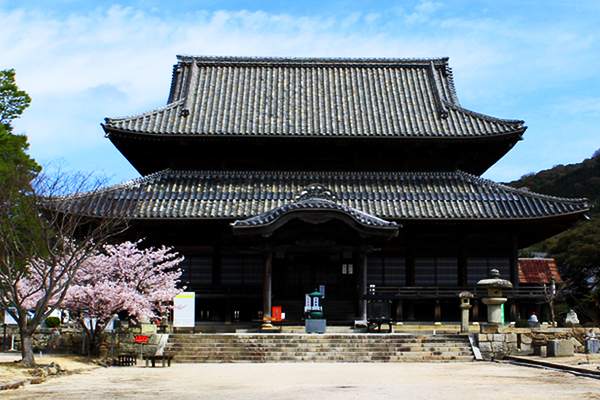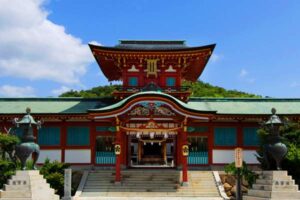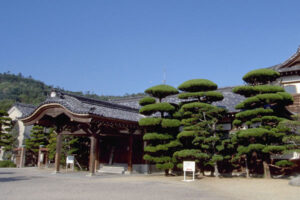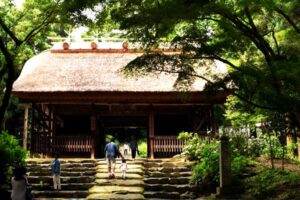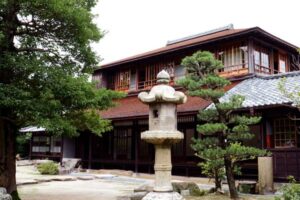A Temple to Protect from Calamity and Pray for Happiness
A Temple to Protect from Calamity and Pray for Happiness
Suo Kokubunji was founded in 741 at the decree of Emperor Shomu (701–756). With a reign marked by rebellions, natural disasters, and epidemics, Emperor Shomu believed that Buddhism could help restore peace and stability to his realm, and ordered the construction of state-maintained temples, or kokubunji, around Japan. The greatest of these was Todaiji in Nara, originally known as Yamato no Kokubunji. Sixty-eight of these state-maintained temples were built in total. In the ensuing 1,300 years, however, most of them collapsed, burned down, or were moved from their original sites.
Suo Kokubunji is unique in that it still stands in its original precincts (though the temple compound is now slightly shorter on its east-west axis) and with many of its key buildings still in their original locations. This fact was established when the main hall, or kondo, was restored between 1997 and 2004 and the bases of the original pillars were found directly beneath the present ones.
The main hall was erected in the late eighteenth century by Mohri Shigetaka, which is why the crest of the Mohri clan is carved into the beams of the kohai, the roof above the stairs leading into the building. The two-story hip-and-gable roof makes for a massive and imposing structure. In the restoration, weathered old tiles were used for the front side of the roof, while newer ones of a uniform color were used on the back. The main hall contains some fifty Buddhist images, of which the most important is the Healing Buddha.
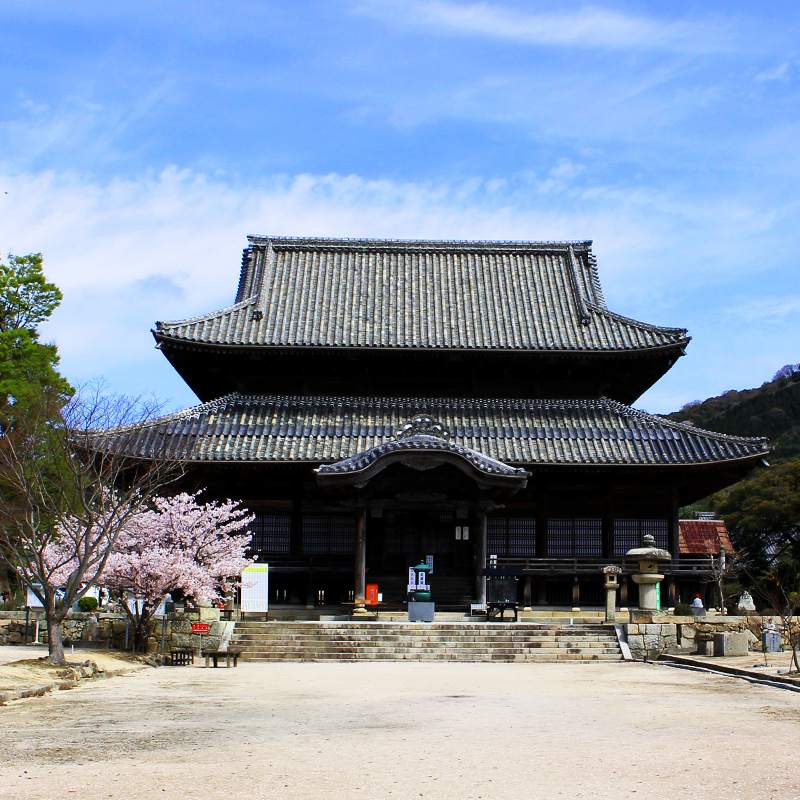
Photo:Kondo Main Hall
Butsuzo Religious Statues
A Host of Heavenly Beings
The Main Statues
There are around fifty butsuzo, or religious statues, in the kondo main hall. They are arranged hierarchically, with the Healing Buddha (Yakushi Nyorai) occupying the central position on the main dais as the principal object of worship. On either side of the Healing Buddha are a Nikko (Sunlight) Bosatsu and Gakko (Moonlight) Bosatsu from the early Heian period (794–1185). They survived a 1417 fire in which the original Healing Buddha statue was destroyed. Compassionate beings who have put off their own enlightenment to save others, bosatsu always wear elaborate robes, with a sash and a crown of sunlight or moonlight.
The statues at either end of the central dais are the four heavenly kings (Shitennō). Originally gods from India, their role is to guard the faith. They are armed, have a flaming nimbus around their heads, and are trampling devils underfoot. With their contorted shapes, multiple limbs, and mischievous faces, these devils are well worth a close look.
The turquoise washi paper behind the dais dates from the 1997-2004 restoration of the temple. It is decorated with the crests of the imperial household: the chrysanthemum and the paulownia.
Other statues
In the rear shrine (kojin) are five nyorai from the Muromachi period (1336–1573). Made of wood, except for the one in the center which is bronze, they used to be in a pagoda that once stood in the temple grounds. The plump and genial-looking god at the far end of the kojin is Daikokuten, one of seven lucky gods who bring prosperity and good fortune.
Returning to the inner shrine (naijin), there is an enmeifugenbosatsu supported by four large elephants (and multiple smaller elephants below them) in the corner. It has twenty arms on the principle that the more limbs a god has, the more people it can help.
The elephants—not an animal native to Japan—are of a slightly eccentric shape, with elongated bodies and oversized, human-looking eyes made of crystal.
In the west corner of the inner shrine is a wooden statue of a seated monk. This is Kukai, the Buddhist monk who brought esoteric Buddhism from China to Japan and established Shingon Buddhism on Mt. Koya in Wakayama.
Yakushi Nyorai Healing Buddha
The Healing Buddha and the Benefits of This World
The principal image of worship among the fifty effigies in the Main Hall of Suo Kokubunji Temple is Yakushi Nyorai, or the Healing Buddha. Both its position in the center of the dais and its size relative to the other statues reflect its importance. The Healing Buddha saves people from disease, relieves hunger and thirst, meets people’s material needs and, broadly speaking, provides “benefits of this world” (gense-riyaku).
Made with the joined-wood-block construction technique known as yosegi-zukuri, the Healing Buddha is seated on a lotus pedestal (a symbol of paradise) with a nimbus behind him that features carvings of the Dainichi Buddha, celestial nymphs, and fantastic birds. His attire of a simple monk’s robe shows that he has found enlightenment. During the restoration of the Main Hall between 1997 and 2004, the Healing Buddha was moved. During this process, it was discovered that the medicine jar in the left hand of the image could be opened—something unique among Yakushi Nyorai in Japan. The jar’s gilt interior contained a mixture of grains, Chinese medicine, glass, and other minerals.
At the same time, the left hand of the original tenth-century Healing Buddha was found inside the base of the present one. When the temple burned down in 1417 after a lightning strike, the statue was too large to be carried out, but the chief priest detached one of its hands and rescued it from the flames. At 64 centimeters in length, it is twice the size of the hand of the present Yakushi Nyorai, suggesting that the original statue was proportionately bigger.

Photo:Butsuzo
Romon Gate
Two-Story Gate with Guardians
Traditionally, Buddhist temples were built on a north-to-south axis, with the main entrance at the south end of the temple precincts. This two-story gate (romon) with a hip-and-gable roof forms the southern entrance to the temple. First constructed in 1596 by the local daimyo Mohri Terumoto, the gate was completely rebuilt by another member of the family, Mohri Shigenari, in 1767. The gate is a decade or two older than the main hall.
On either side of the gate stand two muscular, terror-inspiring guardians known as Nio (two kings) or Kongo Rikishi (mighty wrestlers) dating back to the Muromachi period (1336–1573). Their role is to protect the temple and the religion of Buddhism. The inside of the gate is decorated with carvings of vegetables and ears of rice to promote rich harvests. The current gate was repaired once in 1911 and then dismantled, restored, and rebuilt in 1956.
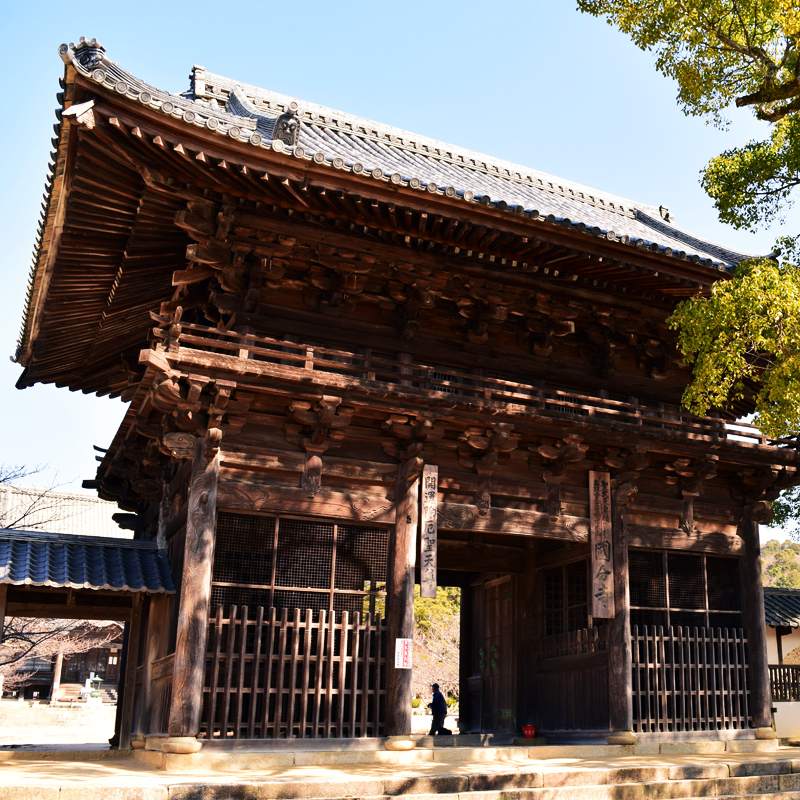
Photo:Romon Gate
Shotendo Temple
Temple of Good Luck
In the west corner of the Suo Kokubunji Temple compound stands the Shotendo. This modestly-sized temple was completed in 2008. The original Shotendo was built by the local daimyo Mohri Yoshihiro in 1702. Shoten is a god who provides people with health, prosperity in business, harmonious marriage, and good fortune overall. He is derived from the Indian god Ganesha, whom Kannon, the Goddess of Mercy, converted from a destructive deity to a benign god who protects the faith and keeps harm at bay. The temple exterior features charming sculptures of lion-dogs and elephants. The interior of the gohai roofed entrance features some straightforward symbols of prosperity and luck, such as gold bars, a key, and Buddhist prayer beads. The ideogram just above the beads reads “fuku,” meaning “luck.”
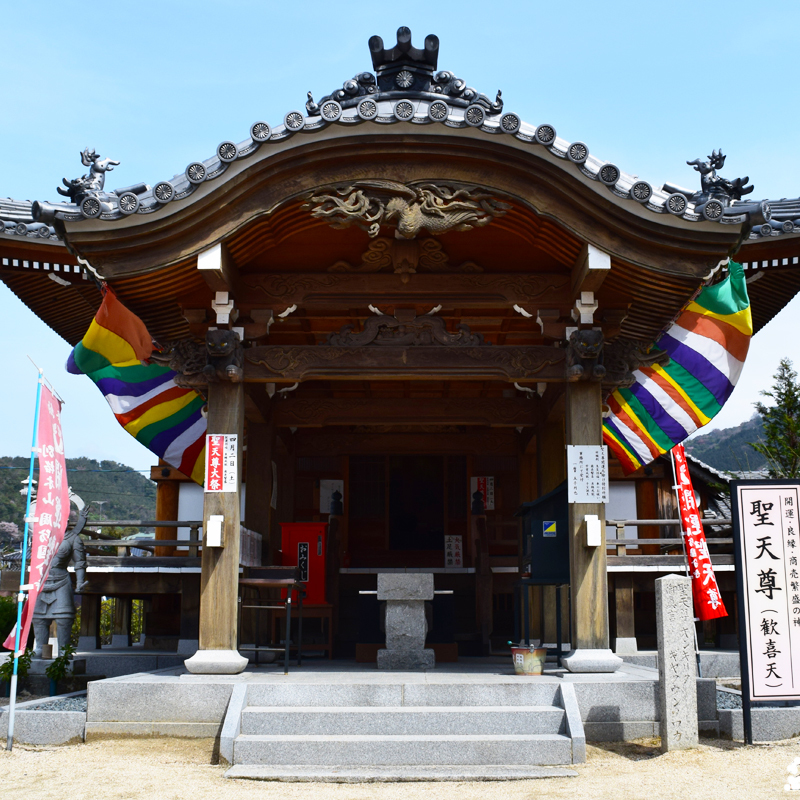
Photo:Shotendo Temple
翻訳について
このサイトの解説文は観光庁の地域観光資源の多言語解説整備事業で作成しました。
Official Site
Information
◆Name of the historical building
Suo Kokubunji
◆Address
2-67 Kokubunji-cho,Hofu City,Yamaguchi Prefecture
◆Phone number
0835-22-0996
◆Traffic access
Take Bocho Bus at North Exit of Hofu Station board for Amidaji and get off at Hofu Kokubunjicho bus stop.
It takes about 5 minutes.
◆Parking areas
Available
◆Kondo Main Hall Opening hours
9:00a.m. ~ 16:00 p.m.
◆Closing
Monday
◆Admission fee
Adult: \500
Junior high school students and younger: \300
